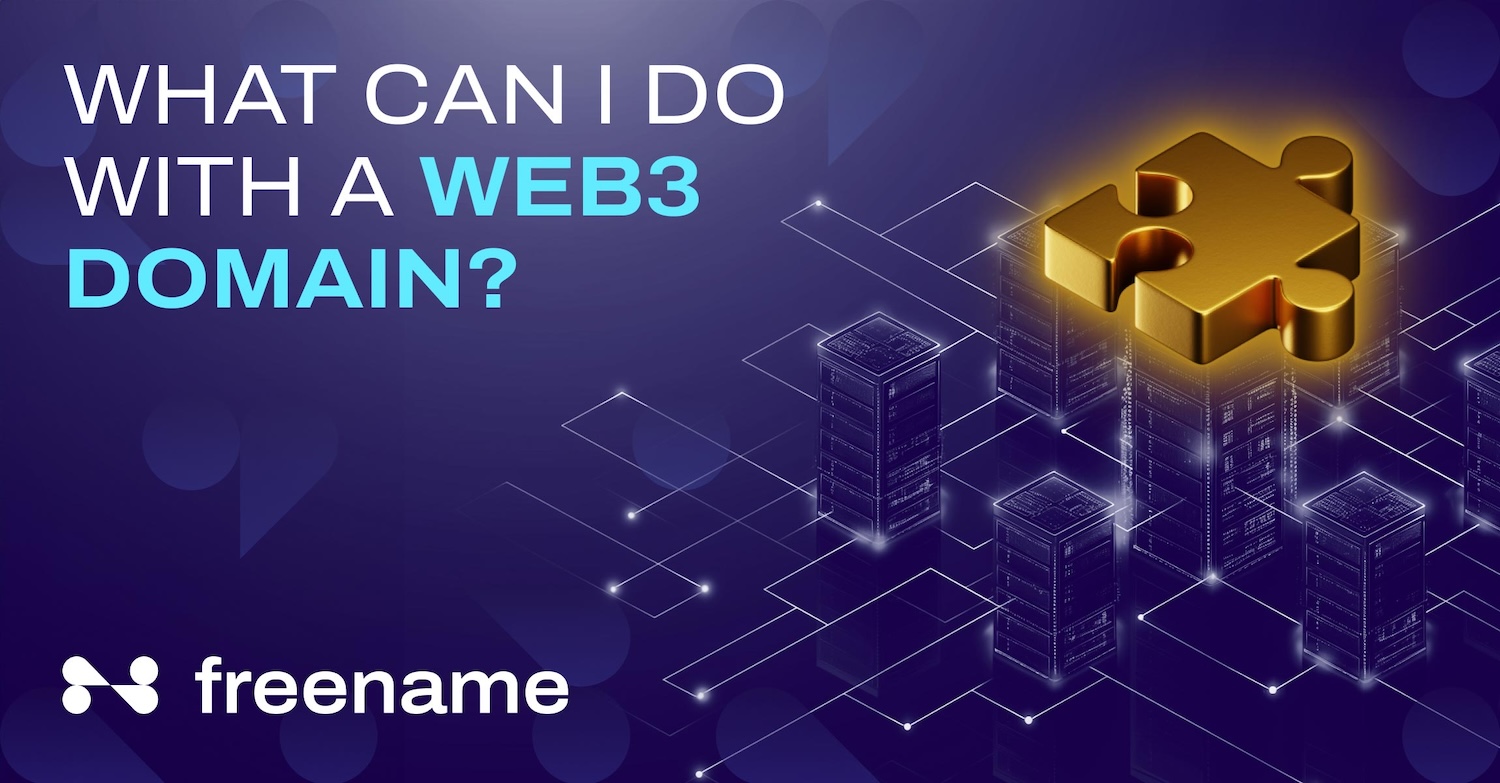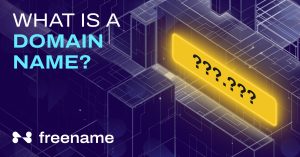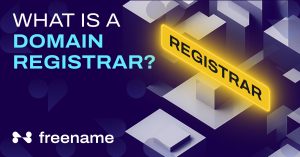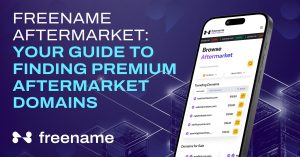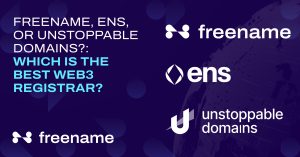Web3 domains are not just digital addresses—they are powerful tools that open up new possibilities in the decentralized web. Unlike traditional Web2 domains, Web3 domains are stored on the blockchain, giving you full ownership and enabling innovative uses like hosting decentralized websites, simplifying cryptocurrency transactions, and managing your digital identity.
Understanding Web3 Domains
These days, using the internet is a daily need, and Web3 domains mark a dramatic change in our web interaction. These domains are not only the newest fad; they represent the foundation of a decentralized internet, an idea that is gaining traction as we look for greater privacy and control online.
How to Use a Web3 Domain
A Web3 domain offers more than just a web address—it provides a gateway to the decentralized web. Here’s how you can use a Web3 domain to enhance your online presence and explore new opportunities.
1. Host a Decentralized Website
With a Web3 domain, you can host a website on decentralized platforms like IPFS. This offers benefits like censorship resistance, enhanced security, and data privacy.
2. Simplify Cryptocurrency Transactions
Web3 domains act as human-readable addresses for cryptocurrency wallets. Instead of sharing a long wallet address, you can use a simple domain name like yourname.crypto to receive payments.
3. Manage Your Digital Identity
Use your Web3 domain as a Web3 identity for logging into decentralized apps (dApps) securely and managing your online presence without needing traditional logins.
4. Create Custom Email Addresses
Set up decentralized email services linked to your Web3 domain, allowing you to maintain full control over your communications.
5. Monetize Your Domain
Sell or lease your Web3 domain on the domain aftermarket, or use it to create premium digital assets that generate revenue. (Learn more about Parked Domains)

What Can You Do with a Web3 Domain?
- Launch a dApp (Decentralized Application): Use your domain as a friendly URL for your dApp.
- Build a Community or DAO Website: Host a platform for your Decentralized Autonomous Organization.
- Set Up Smart Contracts: Make your domain an entry point for smart contract interactions.
- Create a Unique Online Brand: Position yourself at the forefront of the growing Web3 ecosystem.
The Differences Between Web3 And Traditional Domains
For many years, traditional domains have been the standard for navigating the internet. Users must pay an annual fee to maintain a domain name, which is more akin to renting internet space. Since centralized organizations manage these domains, ownership resembles a lease rather than true ownership. Additionally, privacy concerns arise due to the public access required for the personal information needed during registration.
In contrast, Web3 domains offer a new level of independence. Once purchased, they are permanently owned and cannot be reclaimed by any central authority. Registration requires no personal information, enhancing privacy. Moreover, because Web3 domains utilize decentralized blockchain technology, they are less vulnerable to attacks and censorship.
Why Does the Transition to Web3 Domains Matter?
Shifting to Web3 domains represents a move toward internet empowerment, rather than just a technical enhancement. As a user, you gain exceptional control over your digital identity and assets with Web3 domains. As our lives become increasingly digitized, having this level of security and control is crucial. The objective of Web3 domains is to redefine the internet into a space where you possess sovereignty over your digital presence, rather than merely securing a stake in the digital world.
How To Use Your Web3 Domain For Your Projects And Brands
Web3 domains, as we have already established, are decentralized and provide you more power over your online persona and visibility. These are some of the ways that you can use Web3 domains for your own projects and for your brands and company.
Personal Use/ Digital Identity
One of the best ways to stand out online is with a Web3 domain. A Web3 domain allows you to express yourself online in a unique way, perfect for making a lasting impression. For your online persona, below are a few instances of Web3 domain usage:
- Creating a personal website: Make use of your Web3 domain to launch a personal website that displays everything that you want. You can make sure your material is available and unaffected by censorship by using decentralized hosting choices.
- Branding yourself: Your Web3 domain is an essential component of your personal brand. Make sure that all of your web properties utilize the same domain name that reflects your brand.
- Connecting your Web3 domain to your LinkedIn profile, social media accounts, and other professional platforms is a great way to streamline your online presence. All of your internet activity will be conveniently located in one place.
- Using the domain for email: Web3 domains allow you to create bespoke email accounts linked to your domain, which helps to establish your online persona and professionalism even further.
Business Use
Businesses can also leverage Web3 domains to enhance their online presence and engage with customers in innovative ways.
- Creating a business site: Establish a professional online presence for your business with a dedicated website using your Web3 domain. Showcase your products or services, share company information, and interact with customers.
- Web3 domain for e-commerce: Launch an e-commerce platform using your Web3 domain to sell products or services directly to customers. With decentralized payment options, you can offer secure transactions without relying on traditional intermediaries.
DeFi and Your Web3 Domain
Integrate decentralized finance (DeFi) services with your Web3 domain to explore new financial opportunities and manage assets securely.
- Integrating DeFi services with your Domain: Explore DeFi protocols that allow you to integrate financial services directly into your Web3 domain, such as lending, borrowing, or staking.
- Using your domain for DeFi transactions: With your Web3 domain, you can seamlessly participate in DeFi transactions, managing assets and interacting with decentralized applications (DApps) without relying on centralized platforms.
Advanced Web3 Domain Use
In Web3 domains, the potential for interaction with smart contracts unleashes a floodgate of possibilities. Smart contracts let you automate processes, execute transactions, and access decentralized applications (DApps) directly through a seamless integration with your domain.
Choose which smart contract you want to connect your domain to before you can do anything else. Any number of blockchain-based applications could fit this description, including decentralized autonomous organizations (DAOs), decentralized finance (DeFi) protocols, and more.
Following domain identification, creating your Web3 domain entails establishing the required contract addresses and function calls. Domain registrars and Web3 platforms may all have slightly different procedures for this setup, but the good news is that the majority of them have intuitive interfaces that make connection a breeze.
Your domain interface will become the primary means of initiating transactions once your domain is connected to the smart contract. The capabilities of the smart contract determine whether this involves engaging in governance procedures, transferring tokens, or executing predetermined operations.
Read Also: Web3 Global Regulations: Key Laws And High Level Overview
Manage Domain Settings
Accessing the domain management area of your domain provider’s dashboard is the best way to manage your Web3 domain’s settings. Several record customization options are available in the DNS settings. Node records specify the locations of your domain’s servers, whether they are web, email, or decentralized storage networks.
You can alter, add, or remove DNS records to customize the functionality of your domain, according to your needs. When configuring your server, be sure to follow the instructions given by your hosting or service provider. Changes to your domain name system (DNS) settings may not be immediately visible on the web. It may take a few minutes to a few hours for the changes to take effect globally, so be patient throughout this process.
Conclusion
Take advantage of Web3 domains by creating a distinctive online persona, safely managing your digital assets, and using DeFi to investigate new money opportunities. With the help of this article, you can use Web3 domains for your own brand, commercial ventures, and even sophisticated smart contract exchanges.
Can I use a Web3 domain like a traditional domain?
Yes, Web3 domains can function as traditional domains but with added features like decentralization and digital identity management.
How do I access websites with Web3 domains?
You can use compatible browsers or browser extensions to access Web3 domains.
Are Web3 domains secure?
Yes, they are secured by the blockchain, making them less susceptible to hacks and censorship.

